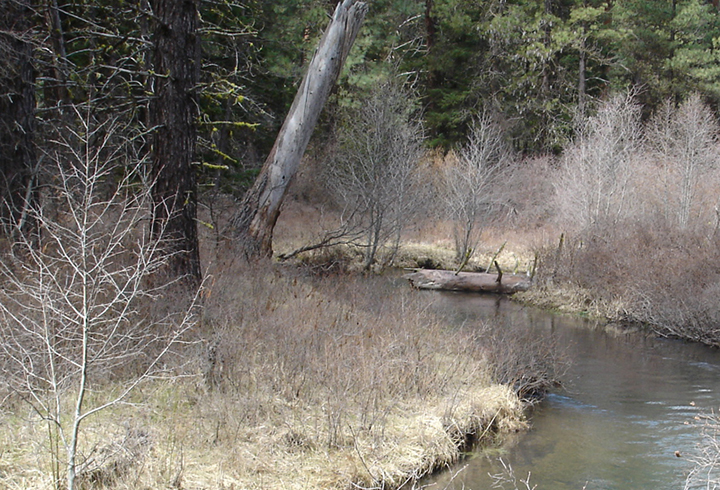Beaver Creek
Fuel Spill | Warm Springs Reservation, Oregon | March 1999
What Happened?
On March 4, 1999, an American Transport, Inc. tanker truck jackknifed on State Route 26. The truck spilled 5,388 gallons of unleaded gasoline onto the reservation of the Confederated Tribes of the Warm Springs Reservation of Oregon. Most of the spilled fuel flowed overland into Beaver Butte Creek just above its confluence with Beaver Creek, a tributary to the Warm Springs River.
What Were the Impacts?
The spill affected an important spawning and rearing area for migratory fish in Beaver Creek. Thousands of fish were killed, including Chinook salmon and steelhead. In addition, juvenile Chinook salmon and steelhead which survived the initial impact of the spill were impacted indirectly. They suffered reduced growth and survival due to a reduction in insects, their primary food source.
Many other natural resources were injured as a result of the spill, including surface water, riparian habitat, resident fish, amphibians, and the benthic communityOrganisms that live in and on the bottom of the ocean floor.. The spill likely also had negative impacts on cultural resources, as well as recreational, ceremonial, and subsistence fishing.
What’s Happening Now?
We reached a settlement with the responsible party in 2006, and finalized a restoration plan in 2009.
Restoration began in 2011. Highlights from completed projects are described below. Long term monitoring at these projects is ongoing.
- An old logging road was decommissioned, allowing restoration of riparian and floodplain habitats along Beaver Creek. Large wood was added to the creek and native vegetation was planted along the banks to enhance fish habitat.
- Nearly two miles of livestock exclusion fencing along Lower Quartz Creek were installed to protect 69 acres of riparian, wetland, and upland habitats from cattle and wild horses.
- Fifteen acres of the Lower Quartz Creek riparian habitat within the fence were planted with native vegetation, and the creek was later realigned and enhanced with beaver dam-mimicking structures to reduce erosion and store sediment.
- Two additional fencing projects were installed to keep livestock out of sensitive habitats along the North Fork of Quartz Creek. One mile of new fence protects 16 acres of riparian habitat along with an aspen stand. Another three miles of fence protects 130 acres of riparian habitat.
- Over four miles of fencing were installed in the Coyote Creek watershed, protecting 359 acres of riparian and upland habitats.
- In 2019, another two miles of fencing were installed, protecting 75 acres of wetland habitat created by a large spring that drains into Coyote Creek.
- All of these fencing projects help reduce erosion, enhance water quality, and improve habitat for the benefit of ESA-listed Mid Columbia steelhead and other aquatic species.
"The secure funding from the spill settlement has allowed the Tribe to leverage additional funding along with the necessary technical support from the Natural Resources Conservation Service to ensure engineering standards are met. Supplemental funding was provided through the Tribes Bonneville Power Administration Funded Habitat Restoration Program on the Reservation."
Scott Turo, Fish Habitat Program Manager, Confederated Tribes of the Warm Springs Reservation of Oregon
Contacts
Lauren Senkyr
NOAA Fisheries Restoration Center
Portland, OR
(503)231-2110
lauren.senkyr@noaa.gov









